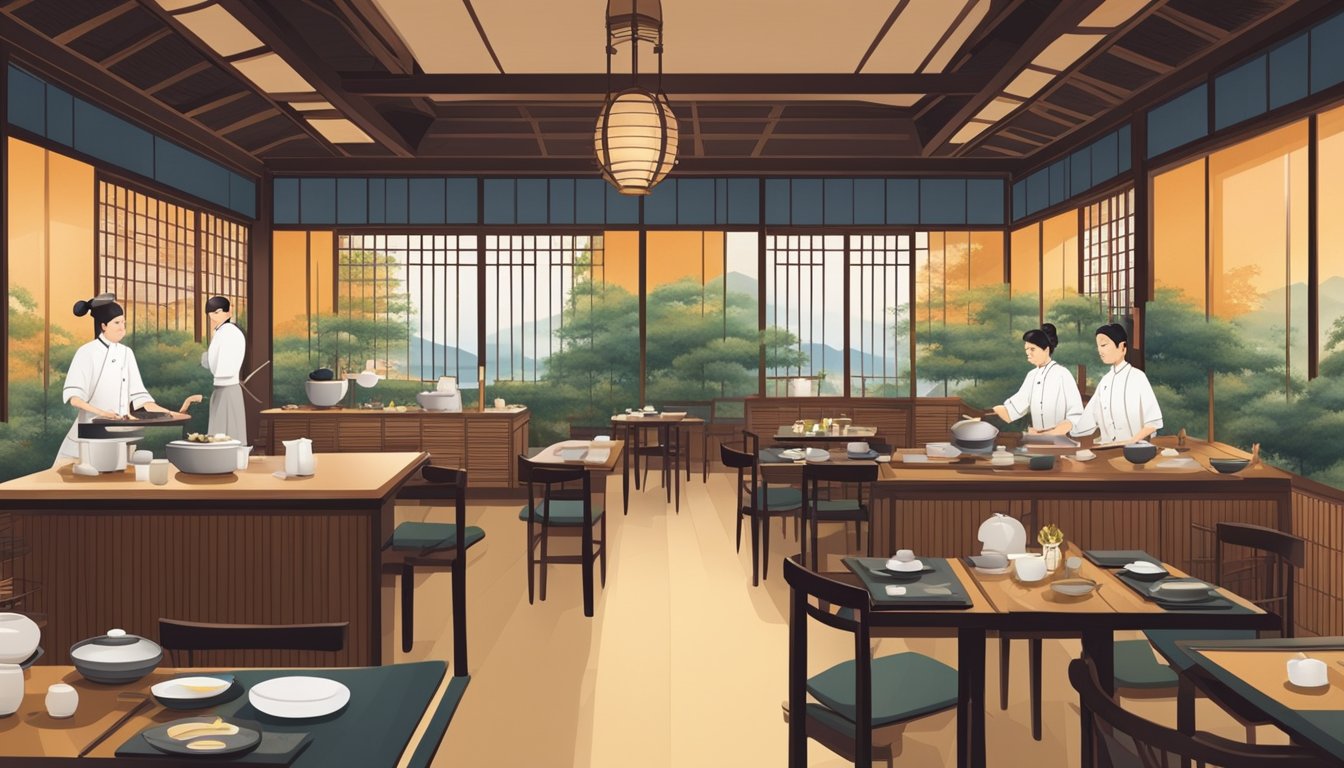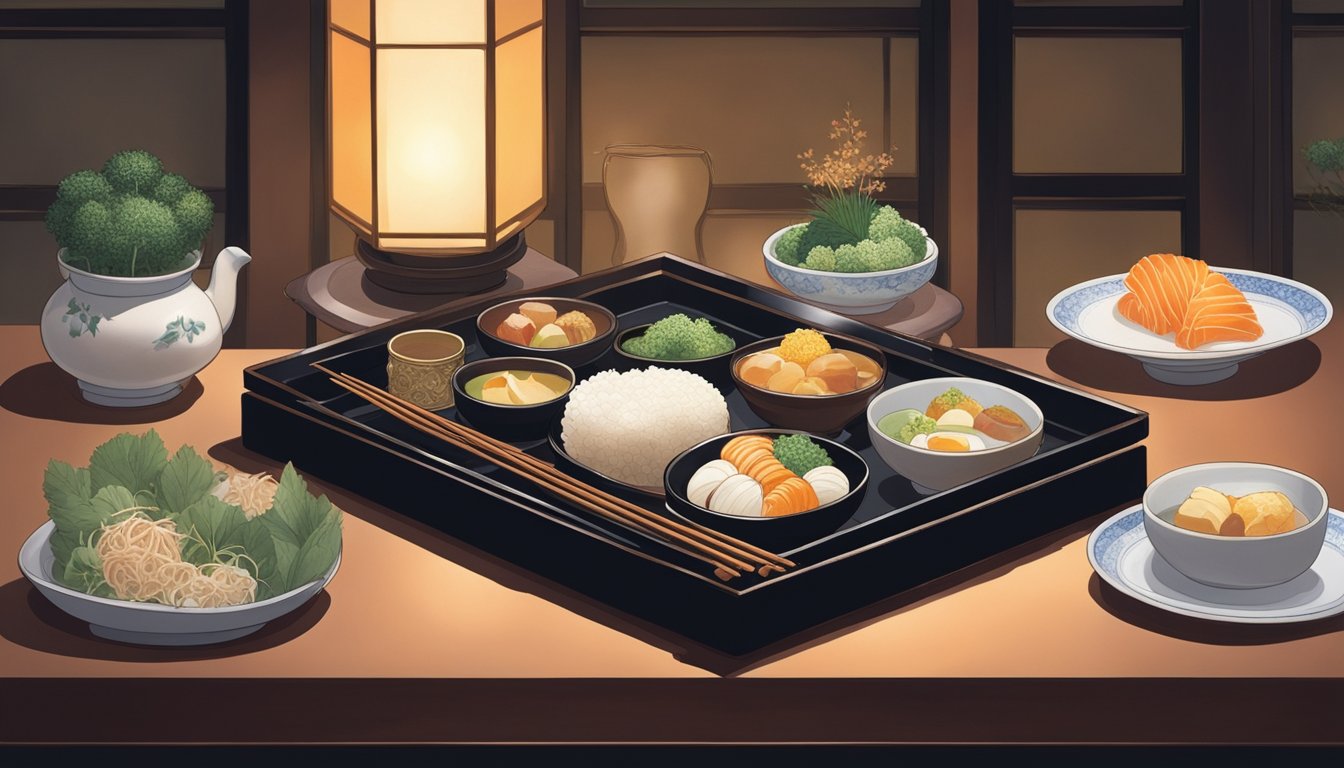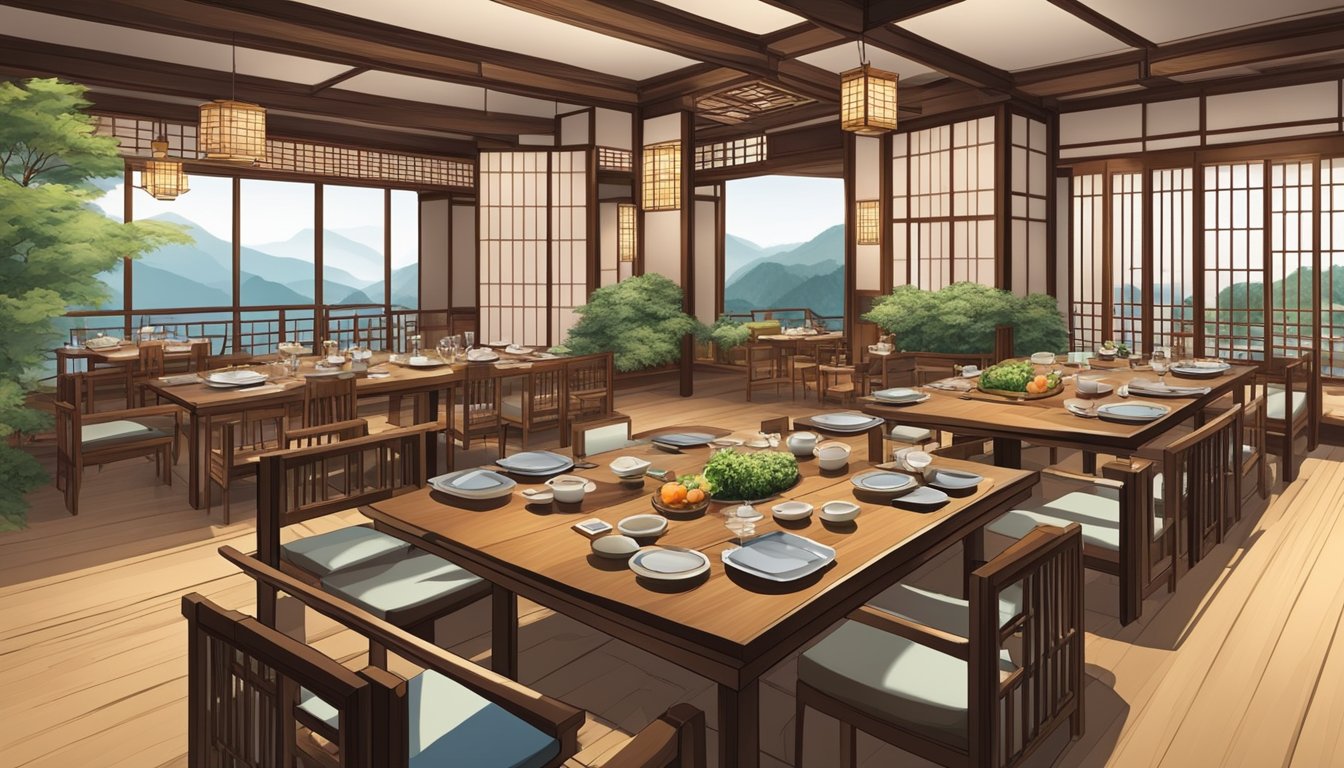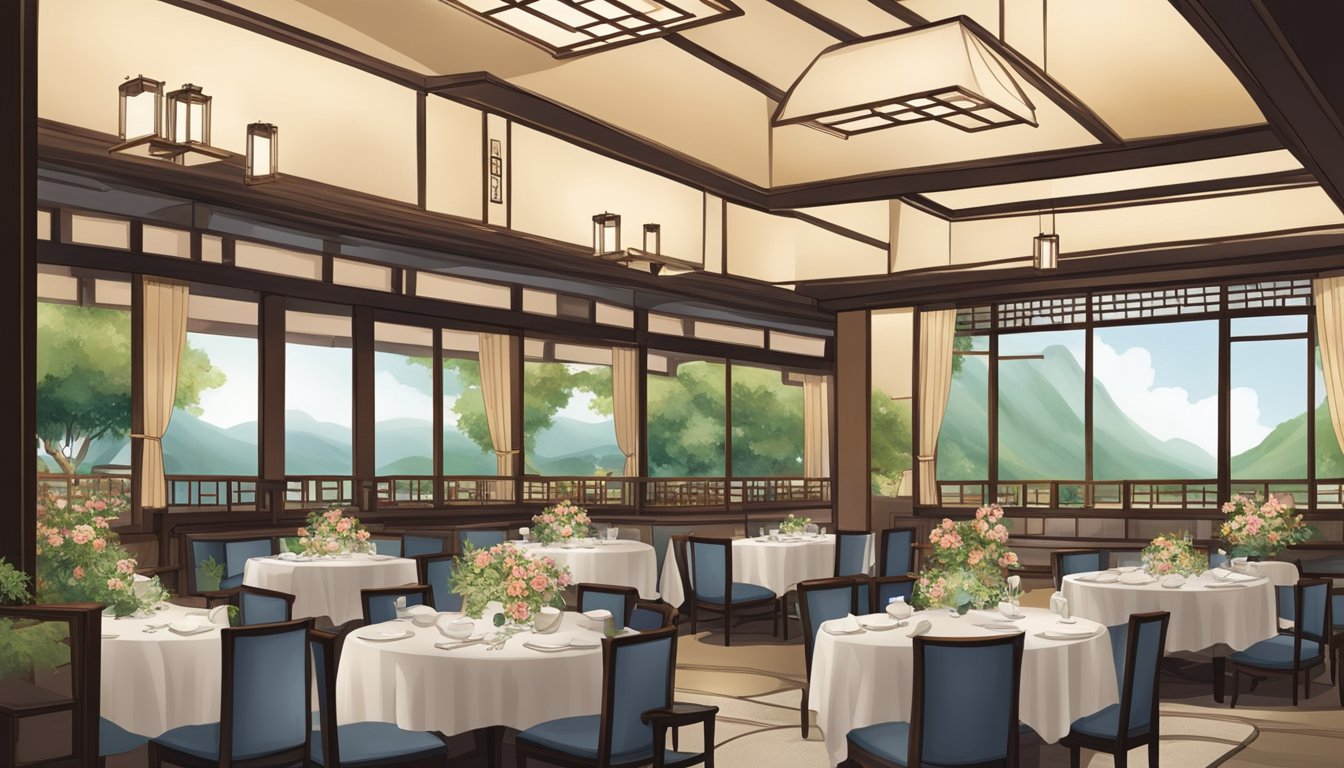Kaiseki cuisine is a traditional Japanese art that has been around for centuries. It is a multi-course meal that is designed to be both visually appealing and delicious. Kaiseki cuisine is known for its use of fresh, seasonal ingredients and its emphasis on presentation. If you’re looking for a unique dining experience, a kaiseki restaurant may be just what you need.

Kaiseki restaurants offer a truly unique dining experience that is unlike anything else. The food is carefully prepared and presented in a way that is both beautiful and delicious. You’ll be able to taste the freshness of the ingredients and appreciate the skill of the chef. Kaiseki cuisine is often compared to haute cuisine, and for good reason. It is a true work of art.
If you’re interested in exploring Japanese cuisine, a kaiseki restaurant is a must-visit. You’ll be able to experience the culture and tradition of Japan through its food. Whether you’re a foodie or just looking for a unique dining experience, a kaiseki restaurant is sure to leave a lasting impression.
Key Takeaways
- Kaiseki cuisine is a traditional Japanese art that emphasises the use of fresh, seasonal ingredients and presentation.
- Kaiseki restaurants offer a unique dining experience that is both beautiful and delicious, often compared to haute cuisine.
- Visiting a kaiseki restaurant is a great way to experience Japanese culture and tradition through its food.
Exploring Kaiseki Cuisine

If you’re a foodie, you must try Kaiseki cuisine at least once in your life. This refined Japanese cuisine is an art form that offers a multi-course meal that is both visually and gastronomically pleasing. Here are some key aspects of Kaiseki cuisine that you should know before you visit a restaurant.
The Art of Kaiseki
Kaiseki is more than just a meal; it’s an art form that combines the beauty of nature with the artistry of the chef. The chef creates a menu that reflects the season, using fresh, seasonal ingredients that are locally sourced. The presentation of each dish is also an important aspect of Kaiseki, with the chef using a variety of techniques to create visually stunning dishes that are almost too beautiful to eat.
Seasonality and Ingredients
The season plays an important role in Kaiseki cuisine, with the chef using seasonal ingredients to create dishes that reflect the time of year. For example, in spring, you might find dishes that feature cherry blossoms or bamboo shoots, while in autumn, you might find dishes that feature mushrooms or chestnuts. The ingredients used in Kaiseki cuisine are of the highest quality, with the chef using only the freshest and most flavourful ingredients available.
The Kaiseki Courses
A Kaiseki meal typically consists of several courses, with each course offering a different taste and texture experience. The meal usually starts with a soup course, followed by a starter, a sashimi course, a simmered dish, a grilled dish, a steamed course, and a rice course. The chef may also include additional courses at their discretion. Each course is carefully prepared and presented, with the chef using a variety of cooking methods and techniques to create dishes that are both delicious and visually stunning.
In conclusion, Kaiseki cuisine is a unique and unforgettable dining experience that combines the artistry of the chef with the beauty of nature. If you’re looking for a meal that is both visually and gastronomically pleasing, then Kaiseki cuisine is definitely worth trying. Just be prepared to pay a premium price for this once-in-a-lifetime experience.
Kaiseki Restaurants and Experiences

If you’re looking for a unique and unforgettable dining experience, look no further than Kaiseki. This traditional Japanese multi-course meal is a gastronomic experience that showcases the best of Japanese produce and culinary skills.
Kaiseki in Japan and Beyond
Kaiseki originated in Kyoto, Japan, and is now enjoyed all over the country. However, it has also gained popularity in other parts of the world, including Singapore. Kaiseki is not just a meal, but a cultural experience that often includes a tea ceremony and other elements of Japanese culture.
Michelin-Starred Kaiseki
For those looking for the ultimate Kaiseki experience, Michelin-starred restaurants are a must-visit. In Japan, Michelin-starred Kaiseki restaurants can be found in Tokyo, Kyoto, Osaka, and other major cities. One of the most famous Michelin-starred Kaiseki restaurants in Japan is Maetomo Japanese Cuisine, located in the Sheraton Towers Hotel in Tokyo.
Special Occasions at Kaiseki
Kaiseki is often enjoyed on special occasions, such as birthdays, weddings, and anniversaries. Many Kaiseki restaurants offer private dining rooms for these occasions, and the meal can be tailored to the specific needs and preferences of the guests.
Kaiseki typically includes a variety of dishes, including seafood, vegetables, miso soup, and more. The meal is often served in small portions, with each dish carefully crafted to showcase the flavours and textures of the ingredients.
If you’re looking for the best Kaiseki restaurants in Singapore, be sure to check out Kaga Cuisine at Shangri-La Singapore and Shinichiro Takagi at the St Regis. These restaurants offer the ultimate Singapore experience, with a focus on high-quality Japanese produce and innovative appetisers.
Kaiseki is not just a meal, but an experience that will stay with you long after you’ve finished your last bite. While it can be pricey, the unique and unforgettable experience is worth every penny. So why not treat yourself to a Kaiseki lunch or dinner and experience the best of Japanese gastronomy?
Frequently Asked Questions

What exquisite delights can one expect from a traditional kaiseki menu?
A traditional kaiseki menu is a multi-course meal that showcases the chef’s culinary skills and creativity. Each dish is carefully prepared to highlight the flavours and textures of the ingredients used. You can expect a variety of dishes, including sashimi, grilled fish, steamed vegetables, soup, and rice. The dishes are often beautifully presented, and the meal is designed to be a feast for both the eyes and the taste buds.
How does one distinguish between kaiseki and omakase dining experiences?
Kaiseki and omakase are both traditional Japanese dining experiences, but they differ in their approach. Kaiseki is a multi-course meal that is pre-determined by the chef, while omakase is a chef’s choice meal that is typically served at a sushi restaurant. Kaiseki is often more formal and elaborate than omakase, with a focus on seasonal ingredients and presentation.
Could you recommend the most renowned kaiseki establishments in Kyoto?
Kyoto is known for its kaiseki cuisine, and there are many renowned establishments to choose from. Some of the most highly recommended kaiseki restaurants in Kyoto include Kikunoi, Kitcho, and Hyotei. Each of these restaurants offers a unique dining experience, with a focus on traditional Japanese cuisine and impeccable service.
What are the typical costs associated with an authentic kaiseki meal in Japan?
The cost of a kaiseki meal can vary depending on the restaurant and the number of courses served. A typical kaiseki meal can cost anywhere from £100 to £300 per person, but some high-end establishments can charge even more. It’s important to note that the cost of a kaiseki meal reflects the quality of the ingredients used and the skill of the chef.
How does the seasonality of ingredients influence a kaiseki meal’s composition?
Seasonality is a crucial component of kaiseki cuisine, with chefs using only the freshest and most seasonal ingredients in their dishes. The composition of a kaiseki meal is designed to reflect the changing seasons, with dishes that showcase the best ingredients available at that time of year. This means that a kaiseki meal in the spring will be different from one served in the winter.
What should one anticipate during their first kaiseki dining adventure?
A kaiseki meal is a unique and unforgettable dining experience that is sure to delight all of your senses. You can expect to be treated to a multi-course meal that is both beautiful and delicious, with each dish carefully prepared to showcase the best of Japanese cuisine. The service is impeccable, and the atmosphere is typically quiet and serene, allowing you to fully appreciate the meal and the company of your dining companions.




